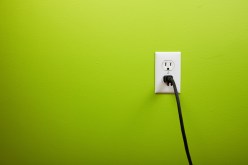The Science Behind Electrolysis: A Simple Explanation
Electrolysis is a fascinating scientific process that splits chemical compounds into their individual elements using electricity. Though it might sound complex, the principles behind electrolysis are straightforward and have practical applications in various industries and everyday life.
What Is Electrolysis?
At its core, electrolysis involves passing an electric current through a liquid or solution containing ions, which causes a chemical reaction. This reaction breaks down the compound into its constituent parts. The solution or liquid used is typically called an electrolyte, and it contains charged particles known as ions that move toward electrodes to facilitate the reaction.
How Does Electrolysis Work?
Electrolysis requires two electrodes: a positively charged anode and a negatively charged cathode. When electricity flows through the electrolyte, positive ions (cations) move toward the cathode where they gain electrons (reduction), while negative ions (anions) move toward the anode where they lose electrons (oxidation). This movement of ions results in chemical changes at each electrode, ultimately separating elements from the compound.
Common Applications of Electrolysis
Electrolysis has many practical uses. One popular application is in water splitting to produce hydrogen and oxygen gases—hydrogen being a clean fuel source. It’s also widely used in metal extraction from ores, electroplating to coat objects with metal layers for protection or decoration, and even in hair removal treatments where electrolysis destroys hair follicles to prevent regrowth.
Why Is Electrolysis Important?
Understanding electrolysis helps us appreciate how we can harness electrical energy to drive chemical transformations essential for manufacturing materials, producing clean energy sources like hydrogen fuel, and improving cosmetic procedures. It bridges physics and chemistry with real-world benefits across multiple fields.
Safety Tips When Working With Electrolysis
While electrolysis is useful, it involves electricity and potentially hazardous chemicals—so safety precautions are crucial. Always use insulated equipment when handling electrical devices near liquids, wear protective gear like gloves and goggles when necessary, and ensure proper ventilation if gases are produced during the process.
In summary, electrolysis offers an elegant way to break down compounds by using electrical currents—a principle that powers significant technological advances today. Whether you’re curious about science or interested in industrial processes, understanding electrolysis opens up insight into how electricity can transform matter.
This text was generated using a large language model, and select text has been reviewed and moderated for purposes such as readability.





